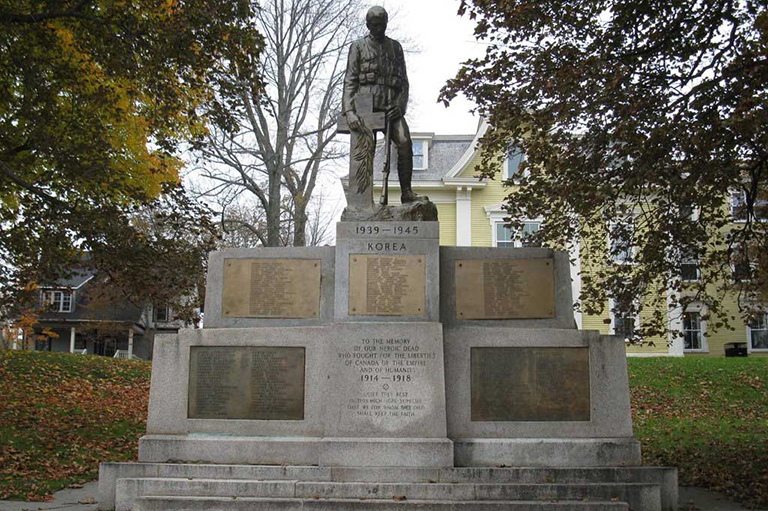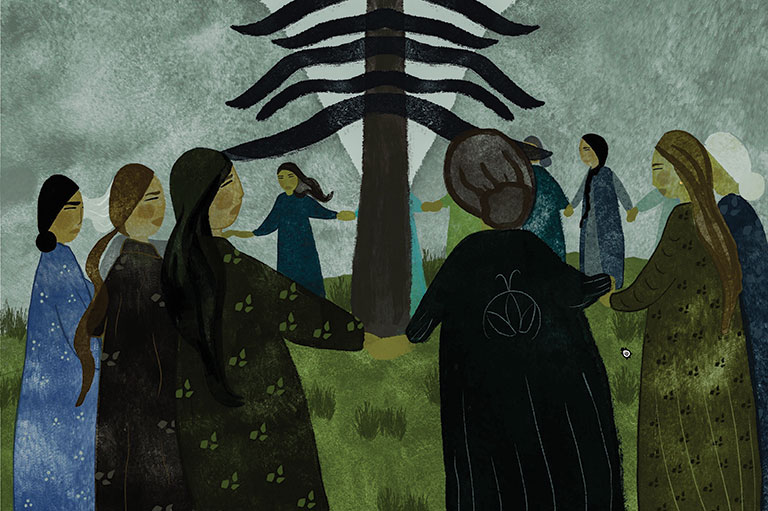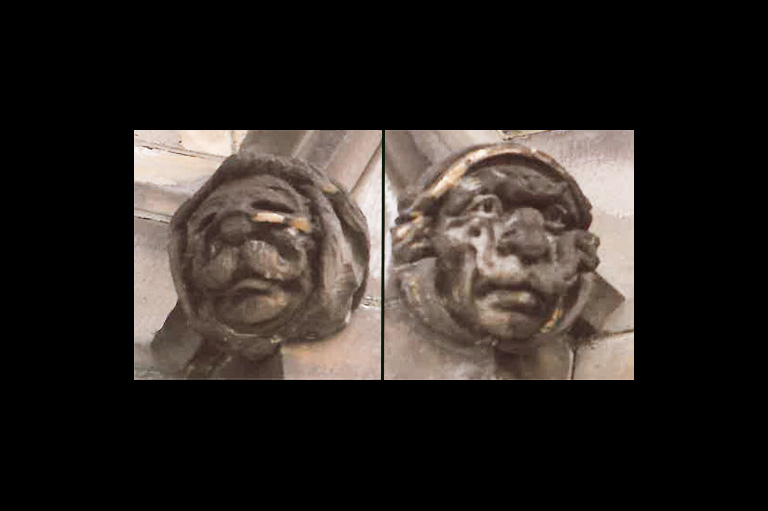Behind the Memorial

Every November 11, crowds gather at cenotaphs and war memorials across the country to pay tribute to those who died in armed conflict. While the rites and rituals surrounding Remembrance Day are well understood, the monuments around which we gather and which dot the landscape are often forgotten. My research attempts to bring light to those memorials and to tell their stories. I am focusing on memorials built in New Brunswick in the 1920s, specifically in St Stephen, Saint John, Fredericton, and Moncton.
These memorials are outward and visible signs of a nation in mourning. They are more than just granite slabs: Some of them are very large, intricate, and many were very expensive. One of the most interesting aspects of these memorials is the amount of money that was spent constructing them. In the 1920s, entrance to a dance might cost 50 cents, an overcoat would cost $45, and a brand new house would cost $5,000. The memorials in the four communities that I am studying were erected at a cost of $20,000 each. None of this money came from any sort of government organization, it was all solicited from the general public. This shows the importance of these monuments to the communities and the people that built them.
Of the four monuments that I have been concentrating on, three of them have very expensive and beautiful sculptures on top of granite slabs. These sculptures were done by very famous Canadian sculptors from Toronto. It is interesting to see that the committees were not interested in making sure that they were supporting local artists; they were more concerned with paying appropriate tribute to their war dead.
Much of the rhetoric surrounding the monuments is what you might expect. They were built in memory of the “heroic war dead,” and to the glory of those who died for King and Country. Many of the memorials are inscribed with a verse that demonstrates this desire to remember and commemorate.
When I began to research these memorials, I really had no idea what I would come across. I had hoped to find debates and discussion about the memorials before they were built. In some cases, I have found that the memorials were constructed unilaterally, with very little debate and very little controversy. In other cases, there was a lot of discussion and debate about what to do and where to put the monument. In some communities, there was pressure to build something “useful” like a hospital wing or a memorial building, in other cases, finding the right location was the sticking point in the community. Reading through old newspapers on microfilm—which made up the better part of my research—is much more entertaining when various civic organizations are fighting.
In many cases, cenotaphs were organized by ad hoc committees. These committees were often made up of eminent citizens in society. The War Memorial Committee in Fredericton, for example, was chaired by Mr Justice Oswald Crockett, who later became a Pusine Justice on the Supreme Court of Canada. On his committee were, amongst others, Lady Ashburham; John Richardson, the Lord Bishop of Fredericton; UNB Chancellor C.C. Jones; and the mayor. Despite the prominence of the various people on this committee, the records of it do not seem to have survived.
Other memorials were organized by women’s organizations such as the Imperial Order of the Daughters of the Empire, the Women’s Civic Council, or the Women’s Institute. Many of these women had sons, brothers, or husbands who responded to the call and went overseas to fight. The role of women during the war, for the most part, was to support the forces. This was done in a variety of ways: fundraisers, clothing drives, knitting bees, etc. My research shows that this role was continued into the post-war period. Even in communities where cenotaphs were organized by ad hoc committees, women’s groups were busy raising money, providing support, and contributing to the memorial funds. Surprisingly, veterans associations are largely absent from these narratives. The Great War Veterans Association, which was the largest of these veterans groups, was more interested in rehabilitation of returned soldiers and financially supporting the families of fallen soldiers.
One common feature of the majority of war memorials is an honour roll. Organizing committees spend a great deal of time and effort tracking down the names of all of the men from the area who died in the conflict. These names were then put onto bronze plaques and attached to the memorials. Fallen soldiers were not repatriated after the Great War, and so it was often impossible for families to go to the gravesites of their loved ones; these memorials, therefore, often became their graves.
These memorials are interesting not only for their role in commemoration, but because they are snapshots of the society in which they were built. The stories that surround these memorials are the stories of a community, their construction dominates the newspapers for months at a time, a great deal of public money was spent, and people took a vested interest in them.
Themes associated with this article
Advertisement




